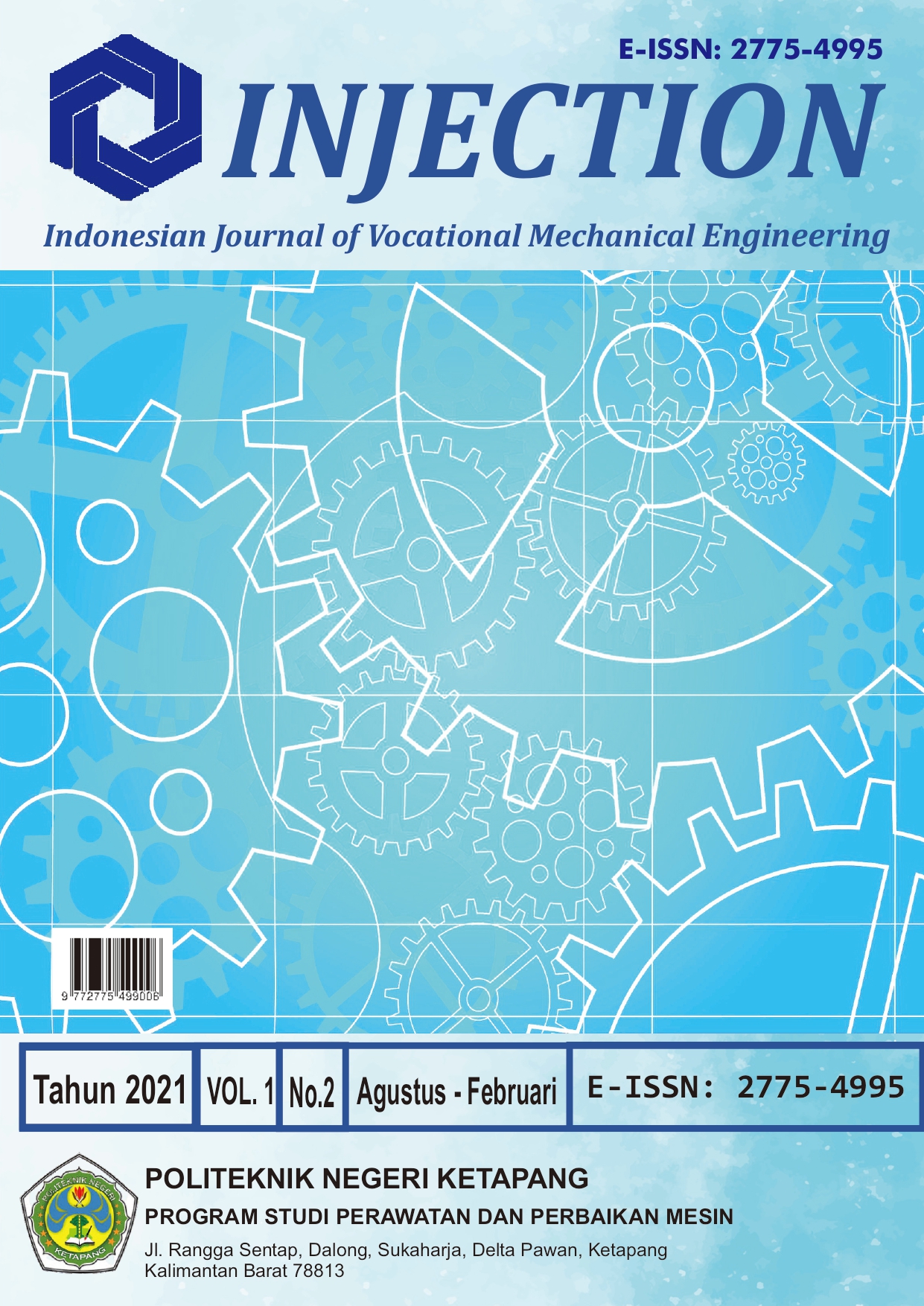EFFECT OF MAGNESIUM TREATMENT PROCESS ON THE PRODUCING COMPACTED GRAPHITECAST IRON WITH DIFFERENT CASTING THICKNESS
DOI:
https://doi.org/10.58466/injection.v1i2.1409Kata Kunci:
CGI, Magnesium, Graphite, SizeAbstrak
Strength, toughness, machinability and damping capacity are properties of compacted graphite iron that distinguish the properties between flake graphite cast iron and spheroidal cast iron. The formation of compacted graphite can be set to achieve the required specification. The formation of compacted graphite is started from spheroidal to compacted cast iron. The residual magnesium after magnesium treatment and the solidification rate
have a significant role in the formation of compacted graphite. The high content of residual magnesium can obstruct the graphite plane to grow during the transformation from spheroidal to compacted shape. In addition, the cooling rate of the casting can be controlled by varying the casting thickness. The compacted graphite in the cast iron are characterized according to shape, size ai`nd distribution. The optimum compacted graphite in the cast iron that can be produced has 30 mm of casting thickness with 0.017 % of residual magnesium.
Referensi
R. Elliott, Chapter 1 - An introduction to cast irons, in Cast Iron Technology, R. Elliott, Editor. 1988, Butterworth-Heinemann. p. 1- 45.
K.B. Rundman,F. Iacoviello, Cast Irons, in Reference Module in Materials Science and Materials Engineering. 2016, Elsevier.
R. Singh, Chapter 7 - Cast Iron, in Applied Welding Engineering (Second Edition), R. Singh, Editor. 2016, Butterworth- Heinemann. p. 65-81.
S. Kim, S.L. Cockcroft, A.M. Omran, Optimization of the process parameters affecting the microstructures and properties of compacted graphite iron. Journal of Alloys and Compounds. 476 (2009) 728-732.
M. König, Literature review of microstructure formation in compacted graphite Iron. International Journal of Cast Metals Research. 23 (2010) 185-192.
S. Kim, S.L. Cockcroft, A.M. Omran, H. Hwang, Mechanical, wear and heat exposure properties of compacted graphite cast iron at elevated temperatures. Journal
of Alloys and Compounds. 487 (2009) 253-
M. Bazdar, H. Abbasi, A. Yaghtin, J. Rassizadehghani, Effect of sulfur on graphite aspect ratio and tensile properties in compacted graphite irons. Journal of materials processing technology. 209 (2009) 1701-1705.
X.J. Sun, Y.X. Li, X. Chen, Identification and evaluation of modification level for compacted graphite cast iron. Journal of Materials Processing Technology. 200 (2008) 471-480.
J. Brown, Foseco ferrous foundryman's handbook. 2000: Butterworth-Heinemann.
S. Hasse, Giesserei Lexikon. Vol. 17. 2007: Schiele & Schön Berlin.
R. Wlodawer, Directional solidification of steel castings. 2013: Elsevier.
M. Górny, Cast iron: compacted graphite, in Encyclopedia of Iron, Steel, and Their Alloys
(Online Version). 2016, CRC Press. p. 718- 734.
A. Handbook, Volume 15 Casting. Materials Park: ASM International, (2008) 416-522.
J. Fowler, T. Prucha, D. Stefanescu, Production of Ferritic and Pearlitic Grades of Compacted Graphite Cast Iron. 1984. p. 361.
I. Standardization, Compacted (vermicular) graphite cast irons--Classification. ISO. 16112 (2006) 2006.
J.C. Hernando, B. Domeij, D. González, J.M. Amieva, A. Diószegi, New Experimental Technique for Nodularity and Mg Fading Control in Compacted Graphite Iron Production on Laboratory Scale. Metallurgical and Materials Transactions A. 48 (2017) 5432-5441.
D. Xijun, Z. Peiyue, L. Gifu, Structure and Formation of Vermicular Graphite. MRS Proceedings. 34 (2011).




